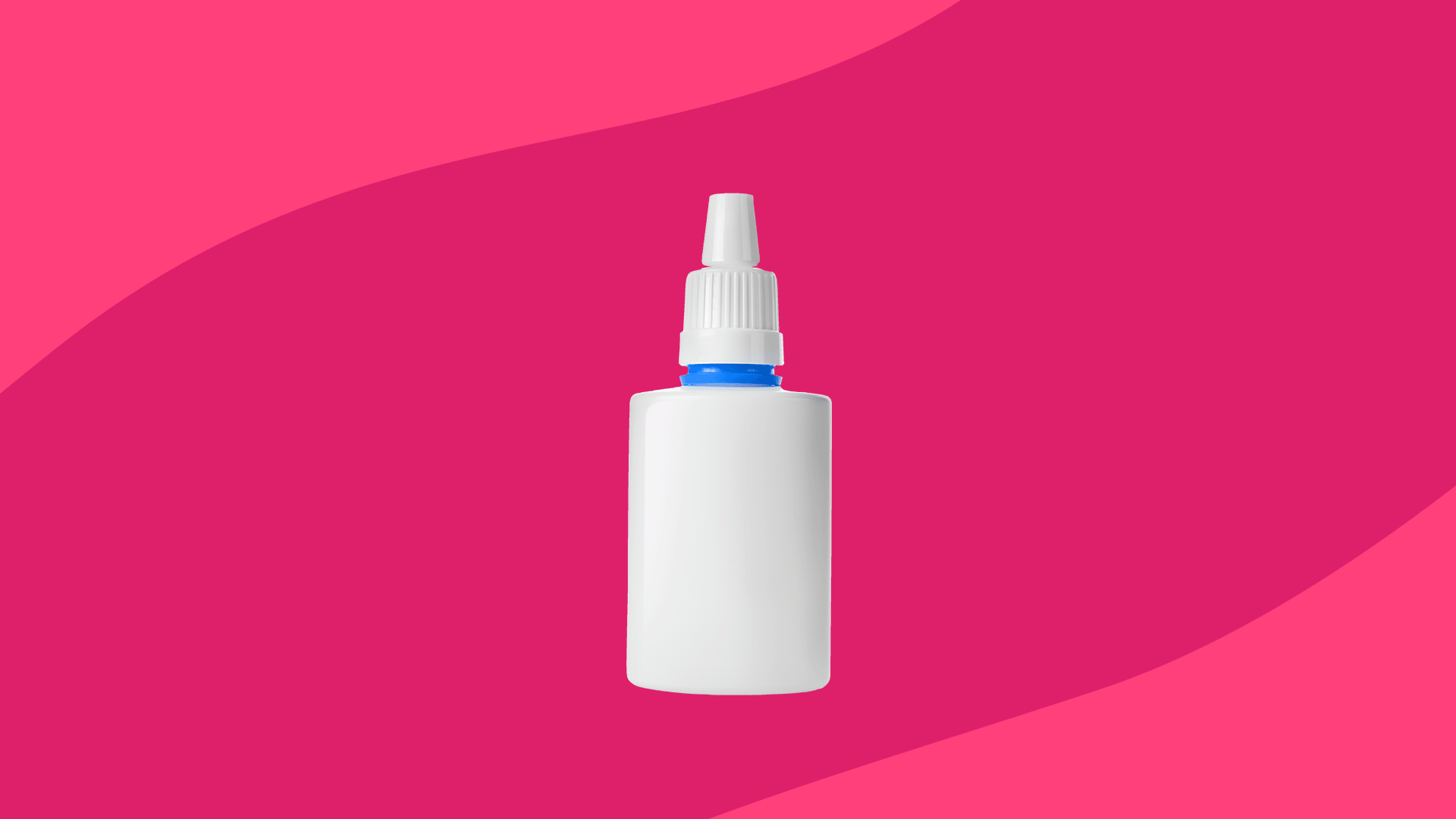Compare Combigan alternatives | Cosopt | Latanoprost | Azopt | Rhopressa | Simbrinza | Natural alternatives | How to switch meds
Combigan (brimonidine tartrate and timolol maleate) is the brand name, manufactured by Allergan, of an eye drop that contains two medications used to lower eye pressure in people with glaucoma or ocular hypertension. As a combination ophthalmic solution, Combigan contains an alpha-adrenergic receptor agonist (brimonidine 0.2%) and a beta-adrenergic receptor inhibitor (timolol 0.5%). Combigan works to reduce elevated intraocular pressure (IOP), which is the fluid pressure inside the eye. Increased fluid pressure in conditions like glaucoma and ocular hypertension can cause damage to the eye and lead to reduced vision. Combigan is used in each affected eye twice daily. With two medications in one eye drop, Combigan is a more convenient eye drop option than using two separate eye drops.
Who shouldn’t take Combigan?
While an effective treatment for some people, Combigan may not be the best and safest option for ocular hypertension or glaucoma treatment. Not all people with elevated eye pressure will require two medications and may only require a single medication eye drop. The individual medications found in Combigan are available as separate eye drops as brimonidine tartrate solution and timolol solution for people who may only need one medication to lower their eye pressure.
Additionally, Combigan should not be used in people with asthma, chronic obstructive pulmonary disease (COPD), sinus bradycardia, second- or third-degree atrioventricular block, overt cardiac failure, and cardiogenic shock. However, one of the biggest advantages of some alternatives is that they are available as generic eye drops that can be more affordable for people.
RELATED: What it’s like living with glaucoma
What can I take in place of Combigan?
There are several brand-name fixed combination eye drops aside from Combigan including Cosopt, Rocklatan, and Simbrinza. Both Combigan and Cosopt are available as generic eye drops. There are a variety of single medication eye drops and oral medications available. While many glaucoma medications have common side effects, some alternatives have distinct adverse effects that should be considered before switching from Combigan.
Compare Combigan alternatives |
|||
|---|---|---|---|
| Drug name | Uses | Dosage | Get coupon |
| Combigan
(brimonidine tartrate/timolol maleate) |
|
Place 1 drop into affected eyes twice daily | Combigan coupon |
| Alphagan P (brimonidine tartrate) |
|
Place 1 drop into affected eyes three times daily | Brimonidine tartrate coupon |
| Azopt (brinzolamide) |
|
Place 1 drop into affected eyes three times daily | Brinzolamide coupon |
| Cosopt
(dorzolamide hydrochloride/timolol maleate) |
|
Place 1 drop into affected eyes twice daily | Cosopt coupon |
| Xalatan, Xelpros (latanoprost) |
|
Place 1 drop into affected eyes once daily in the evening | Latanoprost coupon |
| Rhopressa (netarsudil) |
|
Place 1 drop into affected eyes once daily in the evening | Rhopressa coupon |
| Rocklatan
(netarsudil/latanoprost) |
|
Place 1 drop into affected eyes once daily in the evening | Rocklatan coupon |
| Simbrinza
(brinzolamide/brimonidine tartrate) |
|
Place 1 drop into affected eyes three times daily | Simbrinza coupon |
| Timoptic (timolol maleate) |
|
Place 1 drop into affected eyes twice daily | Timolol maleate coupon |
Other alternatives to Combigan
For people seeking other alternative eye pressure lowering eye drops, there are a variety of brand-name eye drops, generic eye drops, and oral medications.
Ophthalmic alpha adrenergic receptor agonists:
- Alphagan-P (brimonidine tartrate)
- Apraclonidine
- Iopidine (apraclonidine)
Ophthalmic beta blockers:
- Betagan (levobunolol hydrochloride)
- Betaxolol hydrochloride
- Betimol (timolol)
- Betoptic (betaxolol hydrochloride)
- Carteolol hydrochloride
- Istalol (timolol maleate)
- Levobunolol hydrochloride
- Timoptic (timolol maleate)
Ophthalmic carbonic anhydrase inhibitors:
- Azopt (brinzolamide)
- Dorzolamide hydrochloride
- Trusopt (dorzolamide hydrochloride)
Oral carbonic anhydrase inhibitors:
- Acetazolamide capsules/tablets
- Methazolamide tablets
Ophthalmic prostaglandins:
- Bimatoprost
- Durysta (bimatoprost implant)
- Lumigan (bimatoprost)
- Travatan Z (travoprost)
- Travoprost
- Vyzulta (latanoprostene bunod)
- Xalatan (latanoprost)
- Xelpros (latanoprost)
- Zioptan (tafluprost)
Ophthalmic cholinergic agonists/miotic agents:
- Isopto carpine
- Miostat (carbachol)
- Phospholine iodide (echothiophate iodide)
- Vuity (pilocarpine hydrochloride)
Top 5 Combigan alternatives
1. Cosopt (dorzolamide/timolol)
Cosopt is a combination eye drop that can be used to manage open-angle glaucoma and ocular hypertension.
Like Combigan, Cosopt has a generic option available called dorzolamide hydrochloride and timolol maleate. Cosopt contains a carbonic anhydrase inhibitor (dorzolamide) and a beta-adrenergic receptor (timolol). The generic combination medication may be a less expensive option for people. Additionally, Cosopt is available in a preservative-free formulation (Cosopt PF) that can cause less inflammation of the eyes and be beneficial for those who experience dry eyes.
Like Combigan, Cosopt is dosed twice daily into the affected eyes.
Cosopt has similar side effects as Combigan, but also has reports of bitter, sour, or unusual taste.
Like Combigan, Cosopt should not be used in people who have asthma, COPD, sinus bradycardia, second- or third-degree atrioventricular block, overt cardiac failure, or cardiogenic shock.
2. Xalatan, Xelpros (latanoprost)
Latanoprost is a single-medication eye drop that can be used to manage open-angle glaucoma and ocular hypertension. Brand-name medications for latanoprost include Xalatan and Xelpros. As a generic eye drop, latanoprost may be a less expensive option for people.
Latanoprost is a prostaglandin analogue.
Unlike Combigan, latanoprost is dosed once daily in the evening, which may be more convenient for people.
Latanoprost has similar side effects as Combigan but also has reports of foreign body sensation (gritty sensation in eye), upper respiratory infection/cold/flu, increased pigmentation/darkening of the iris, and eyelash changes including increased length and thickness.
RELATED: What are prostaglandins?
3. Azopt (brinzolamide)
Brinzolamide is a single-medication eye drop that can be used to manage open-angle glaucoma and ocular hypertension. The brand-name medication is called Azopt. As a generic eye drop, brinzolamide may be a less expensive option for people.
Brinzolamide is a carbonic anhydrase inhibitor.
Unlike Combigan, brinzolamide is dosed three times daily.
Azopt (brinzolamide) has similar side effects as Combigan but also has reports of inflammation of the eyelids, foreign body sensation (gritty sensation in eye), stuffy nose, and bitter, sour, or unusual taste.
RELATED: Carbonic anhydrase inhibitors: Uses, common brands, and safety information
4. Rhopressa (netarsudil ophthalmic solution)
Rhopressa is a single-medication eye drop that can be used to manage open-angle glaucoma and ocular hypertension. This is currently only available as a brand-name eye drop and does not have a generic option.
Rhopressa is a newer first-in-class medication called a Rho kinase inhibitor.
Unlike Combigan, Rhopressa is dosed once daily in the evening, which may be more convenient for people.
Rhopressa has reports of side effects that Combigan does not have, including eye pain when administering, corneal verticillata (deposits in cornea), and broken blood vessels in the eye.
5. Simbrinza (brinzolamide and brimonidine tartrate)
Simbrinza is a combination eye drop that can be used to manage open-angle glaucoma and ocular hypertension. This is currently only available as a brand-name eye drop and does not have a generic option. Simbrinza contains a carbonic anhydrase inhibitor (brinzolamide) and an alpha 2 adrenergic receptor agonist (brimonidine tartrate).
Unlike Combigan, Simbrinza is dosed three times daily.
Simbrinza has reports of side effects that Combigan does not have, including a bad taste in the mouth and dry mouth.
Natural alternatives to Combigan
Alternative remedies for Combigan include certain supplements, lifestyle changes, and diet modifications to keep the eyes healthy. According to the American Optometric Association, proper nutrition for eye health includes a diet that has zinc, copper, essential fatty acids, lutein, vitamin C, vitamin E, and vitamin A. The supplement, PreserVision, includes many of these nutrients and is available as an over-the-counter medication.
Lifestyle modifications include incorporating physical exercise into a routine that can have a positive impact on reducing some glaucoma risk factors including high blood pressure and diabetes. Diet modifications include reducing caffeine intake as caffeine may have an impact on raising intraocular eye pressure.
How to switch to a Combigan alternative
1. Discuss all health conditions with a healthcare provider
Before switching from Combigan to an alternative, it’s important the prescribing doctor has reviewed all health conditions and potential drug interactions. Combigan and some alternatives must not be used in people who have asthma, COPD, sinus bradycardia, second- or third-degree atrioventricular block, overt cardiac failure, and cardiogenic shock. It’s best to seek medical advice from a specialist in ophthalmology or your healthcare provider prior to changing medication therapy.
2. Do not suddenly stop taking Combigan
Before stopping Combigan, make a glaucoma or ocular hypertension care plan with the prescribing doctor to make sure to avoid increases in intraocular pressure. Once a plan has been established, Combigan can be safely discontinued and replaced with the new treatment.
3. Continue proper eye drop administration
Using eye drops correctly ensures proper drug administration and absorption into the eye.
It’s important to make sure contact lenses are taken out of the eye prior to using eye drops unless the eye doctor has instructed the patient to keep them in. Make sure hands are washed, tilt the head backward while sitting, standing, or lying down, place the index finger below the lower lid to gently pull down and form a pocket, look up, and squeeze the drop into the pocket. It’s important to keep the eye closed after the drop has been administered. Try to keep the eye closed for one to three minutes without blinking.
If using more than one drop or more than one type of eye drop, wait five minutes before putting the next drop in. This will keep the first drop from being washed out by the second before it has had time to work.
4. Keep and maintain eye doctor appointments
People with glaucoma and ocular hypertension should be regularly checked by their eye doctor. At these appointments, the intraocular eye pressure (IOP) can be measured to determine the effectiveness of their medication regimen. It’s important for people managing their IOP to be aware of the normal eye pressure range (12-22 mm Hg) and the high-pressure range (greater than 22 mm Hg). Vision tests may also be performed to check for any loss of sight or optic nerve damage.











